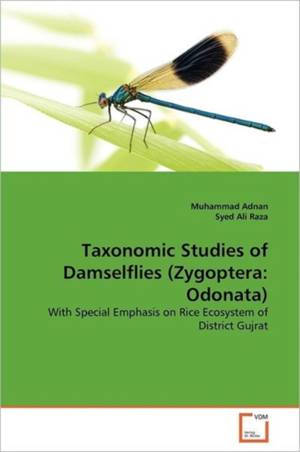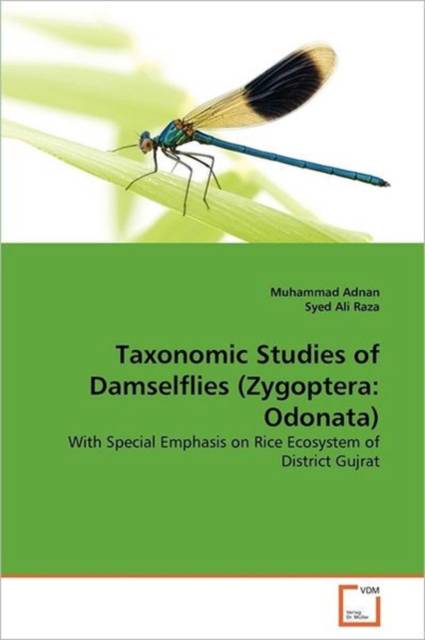
- Afhalen na 1 uur in een winkel met voorraad
- Gratis thuislevering in België vanaf € 30
- Ruim aanbod met 7 miljoen producten
- Afhalen na 1 uur in een winkel met voorraad
- Gratis thuislevering in België vanaf € 30
- Ruim aanbod met 7 miljoen producten
Zoeken
Taxonomic Studies of Damselflies (Zygoptera
Odonata)
Muhammad Adnan, Syed Ali Raza
Paperback | Engels
€ 48,45
+ 96 punten
Omschrijving
Zygopterans (Damselflies) are economically very important because they have a role in insect pest management; especially they mostly feed on the pests of rice like water fleas, larvae of mosquitoes and bugs. Rice is one of the major crops grown in Gujrat, so current project was designed to explore the Zygopterous fauna of District Gujrat. Adult samples were caught with a light and strong insect collecting net having a handle 2ft length and ring diameter of about 20 cm. Ethyl acetate as a killing chemical was used in glass jars. After softening with water bath, samples were placed and stretched over thermopore sheets and pinned properly and carefully. Identification was carried out by using standard keys. Seven species of damselflies were recorded from 14 different localities of Distt. Gujrat (July-August, 2010). The species recorded from the distt. Gujrat were Agriocnemis pygmaea, Ceriagrion coromandelianum, Pseudagrion hypermelas, Pseudagrion spencei, Enallagma parvum, Ischnura aurora and Rhodischnura nursei. Ischnura aurora is the most common and abundant specie found in all localities of the district while Pseudagrion spencei is rare in this district.
Specificaties
Betrokkenen
- Auteur(s):
- Uitgeverij:
Inhoud
- Aantal bladzijden:
- 56
- Taal:
- Engels
Eigenschappen
- Productcode (EAN):
- 9783639358667
- Verschijningsdatum:
- 26/08/2011
- Uitvoering:
- Paperback
- Formaat:
- Trade paperback (VS)
- Afmetingen:
- 152 mm x 229 mm
- Gewicht:
- 95 g

Alleen bij Standaard Boekhandel
+ 96 punten op je klantenkaart van Standaard Boekhandel
Beoordelingen
We publiceren alleen reviews die voldoen aan de voorwaarden voor reviews. Bekijk onze voorwaarden voor reviews.











